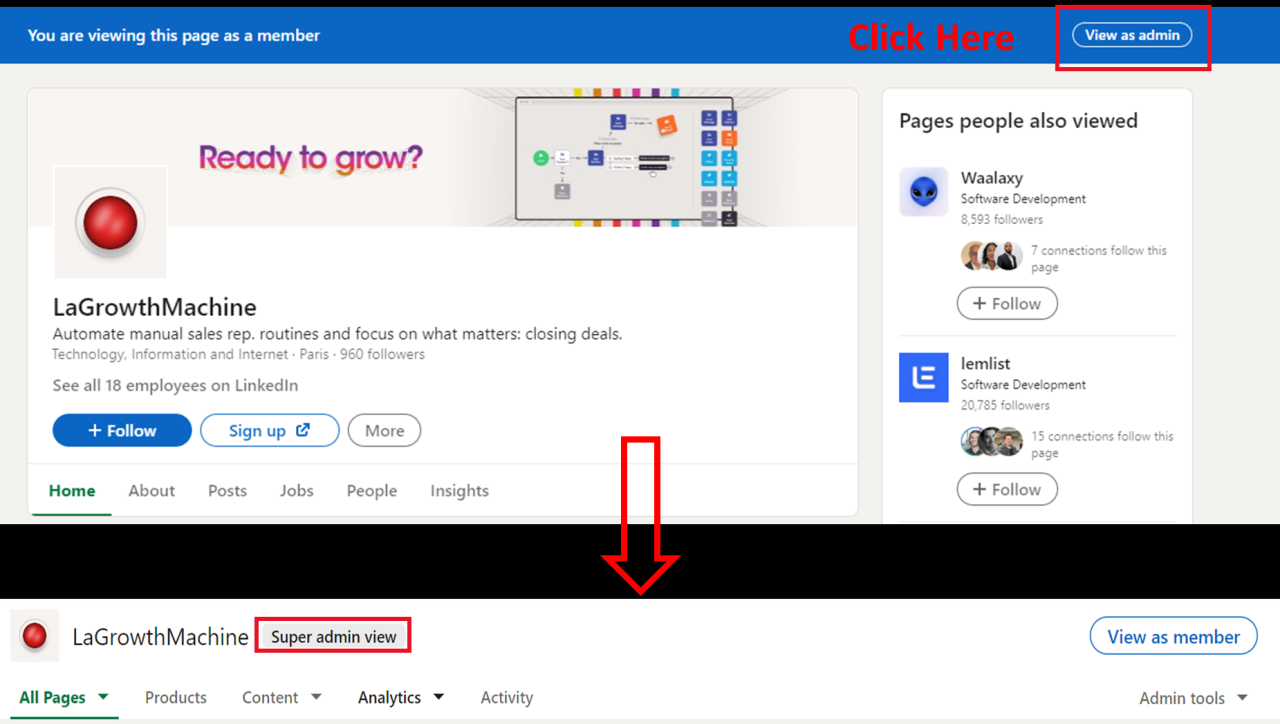
Ultimate Guide LinkedIn Lead Gen Forms Your Blueprint
Ultimate guide LinkedIn lead gen forms provides a comprehensive resource for mastering the art of lead generation on LinkedIn. This in-depth guide unpacks the intricacies of LinkedIn Lead Gen forms, from their basic functionalities to advanced strategies for maximizing conversions. Discover the secrets behind crafting effective forms, optimizing for conversions, and tracking your results to propel your lead generation game to new heights.
This guide walks you through every step, from initial setup and design to advanced techniques like CRM integration and LinkedIn automation. Learn how to create compelling forms, optimize for specific audiences, and measure your progress with key metrics. We’ll delve into best practices and real-world examples, ensuring you’re equipped to generate high-quality leads on LinkedIn.
Introduction to LinkedIn Lead Gen Forms

LinkedIn Lead Gen forms are a powerful tool specifically designed for lead generation within the LinkedIn platform. They allow businesses to collect valuable contact information from potential customers who are actively engaging with their content or profile. These forms are embedded directly into LinkedIn posts, enabling a seamless and streamlined lead capture process.This streamlined approach to lead generation significantly reduces friction in the sales funnel.
By presenting a compelling call to action within the LinkedIn ecosystem, businesses can capture qualified leads directly from the platform, minimizing the need for external landing pages or other lead capture tools. This approach fosters a more direct and targeted approach to lead nurturing.
Purpose and Benefits of LinkedIn Lead Gen Forms
LinkedIn Lead Gen forms serve the crucial purpose of collecting contact information from users interested in a specific product, service, or offer. This information can be used for follow-up communications, targeted marketing campaigns, and ultimately, converting prospects into paying customers. The primary benefit is the inherent connection within the LinkedIn network. By capturing leads directly within LinkedIn, you leverage the platform’s inherent trust and credibility, increasing the likelihood of qualified leads.
This approach avoids the common issues of users abandoning their information on external landing pages.
Examples of Successful LinkedIn Lead Gen Form Implementations
Several businesses have effectively leveraged LinkedIn Lead Gen forms to drive significant lead generation. For instance, companies in the SaaS industry have used these forms to collect leads for free trials or consultations. Similarly, B2B companies have successfully used them to gather leads for webinars or downloadable resources. A common theme in successful implementation is aligning the form’s purpose with a specific offer or value proposition, ensuring that the request for information is perceived as valuable to the user.
Key Features and Functionalities of LinkedIn Lead Gen Forms
LinkedIn Lead Gen forms offer several key features designed to optimize the lead capture process. These forms allow for the customization of fields to collect specific information relevant to your business, such as job title, company size, and desired outcomes. Furthermore, the forms integrate seamlessly with LinkedIn’s platform, ensuring a consistent user experience. This seamless integration allows businesses to focus on crafting compelling copy and offers, knowing that the lead capture process is efficient and user-friendly.
Comparison to Other Lead Generation Methods
Compared to other lead generation methods, LinkedIn Lead Gen forms offer a distinct advantage in terms of lead quality and ease of use. While email marketing and paid advertising can generate leads, LinkedIn Lead Gen forms often yield higher quality leads due to the inherent connection with the user’s professional profile and interests. This focused approach allows for a more targeted and effective follow-up process.
The reduced friction compared to landing page conversions further contributes to a more positive user experience.
Steps to Create a LinkedIn Lead Gen Form
Creating a LinkedIn Lead Gen form is a straightforward process, allowing businesses to quickly integrate this lead generation tool into their LinkedIn strategy.
| Step | Description |
|---|---|
| 1 | Sign in to LinkedIn |
| 2 | Navigate to the Lead Gen form creation page |
| 3 | Define the form’s purpose and desired information, specifying the fields to collect. |
Optimizing for Conversion
LinkedIn Lead Gen Forms offer a powerful way to generate leads, but maximizing their effectiveness requires strategic optimization. This crucial step ensures your form isn’t just collecting data, but actively converting prospects into valuable leads. Focusing on a user-friendly design, clear value propositions, and targeted messaging are key to driving higher conversion rates.Effective lead generation forms are more than just a series of questions.
They are carefully crafted experiences designed to guide prospects toward a desired outcome. This involves understanding your target audience and tailoring your form to resonate with their needs and motivations. By implementing these optimization strategies, you can dramatically improve your lead generation success.
Form Field Optimization
Clear and concise fields are essential for minimizing friction and maximizing completion rates. Avoid overly complex or unnecessary fields. Focus on collecting only the essential information required to qualify leads. For example, instead of asking for a detailed job description, ask for the job title. This significantly reduces the effort required for a prospect to complete the form.
Prioritize fields that allow for easy and quick input. If you have an option for a pre-populated field, consider using it to streamline the form-filling process.
So, you’re diving deep into the ultimate guide to LinkedIn lead gen forms? Knowing how to craft compelling forms is key, but understanding the bigger picture of content strategy is crucial too. A strong content manager, like the ones described in this helpful article on what is a content manager , can help you create the perfect content to attract leads and make those forms truly effective.
Ultimately, the best LinkedIn lead gen forms are supported by a well-rounded content strategy.
Leveraging LinkedIn Targeting
LinkedIn’s robust targeting options can be seamlessly integrated into your Lead Gen Forms to increase their effectiveness. This allows you to refine your outreach and reach the most qualified prospects. By leveraging specific criteria such as industry, job title, company size, and more, you can ensure your form is seen by those most likely to convert. This targeted approach ensures your message resonates with the intended audience, boosting your conversion rates.
My ultimate guide to LinkedIn lead gen forms is almost ready! One crucial detail to nail before launch is understanding domain structure, like whether to use “www” or “not www” in your URLs. This choice can affect SEO and user experience, so I highly recommend checking out this helpful resource on www vs non www before you finalize your form setup.
Hopefully, this extra step will help you maximize your LinkedIn lead generation results!
Form Variation Testing
Testing different form variations is crucial for identifying the most effective design and messaging strategies. This iterative approach allows you to learn from your data and refine your forms over time. Testing various layouts, calls to action, and visual elements helps you discover what resonates best with your target audience. This continuous improvement process ensures your form design remains optimized and effective.
A/B Testing Strategies
A/B testing allows you to compare two different versions of a form element. For instance, test two different headlines or call-to-action buttons to see which performs better. You can also test different visual elements, such as colors or images, to see which ones increase engagement and drive higher conversion rates. This data-driven approach to optimization is vital for maximizing the impact of your LinkedIn Lead Gen Forms.
Key metrics to track during A/B testing include completion rate, form abandonment rate, and conversion rate.
Compelling Visuals and Copy
Engaging visuals and persuasive copy are essential components of a successful Lead Gen Form. Visuals can include relevant images, logos, or even short videos. The copy should be clear, concise, and focused on the value proposition. A well-written copy highlights the benefits of filling out the form, and clear calls to action direct the user towards completion.
For example, emphasizing the unique value proposition of your service or product can be highly effective in generating leads.
LinkedIn Targeting Options for Forms
| Option | Description | Example |
|---|---|---|
| Industry | Target by industry | Technology |
| Job title | Target by job title | Marketing Manager |
| Company size | Target by company size | 1000+ employees |
| Company location | Target by location | San Francisco Bay Area |
| Connections | Target based on connections | Connections with a specific job title |
| School | Target based on attended school | Stanford University |
| Years of experience | Target by years of experience | 5+ years |
Tracking and Analyzing Results
Monitoring the performance of your LinkedIn Lead Gen forms is crucial for understanding what’s working and what needs improvement. Thorough tracking allows you to refine your approach, maximizing the effectiveness of your lead generation efforts. By analyzing results, you can identify trends and optimize your form for higher conversion rates. This ultimately leads to a more efficient and successful lead generation strategy.Understanding your form’s performance isn’t just about numbers; it’s about interpreting the data to identify areas for improvement.
This involves tracking key metrics and using that data to adjust your form’s design, content, and targeting. By paying close attention to the results, you can make data-driven decisions and achieve a higher return on investment.
Form Performance Metrics
Understanding the various metrics available for tracking LinkedIn Lead Gen form performance is vital. Tracking these metrics allows you to understand the effectiveness of your forms and identify areas for improvement. Each metric offers unique insights into the form’s overall performance.
Form Completion Rates
Form completion rates are a critical indicator of the form’s effectiveness. High completion rates suggest that your form is engaging and easy to use, while low rates might point to areas needing improvement, such as overly complex fields or unclear instructions. Measuring completion rates is a key aspect of tracking form performance and refining the user experience.
Looking for the ultimate guide to LinkedIn lead generation forms? A key element to effective lead generation is understanding the target audience. For example, a deep dive into the work of Keith Cunningham, Marketing Director at Pinnacle Global Network, keith cunningham marketing director pinnacle global network , offers insights into successful LinkedIn strategies. This knowledge, coupled with a strong understanding of LinkedIn form best practices, can significantly improve your lead generation efforts.
Analyzing Form Data for Insights
Analyzing form data provides valuable insights into user behavior and preferences. This includes identifying which fields are most frequently completed, which questions are skipped, and which prompts lead to the most conversions. By carefully examining this data, you can refine your forms and make them more effective at capturing the information you need. By understanding the data, you can create a better user experience and improve your conversion rates.
Key Metrics for LinkedIn Lead Gen Form Success
Several key metrics provide a comprehensive view of LinkedIn Lead Gen form performance. These metrics help evaluate the effectiveness of your forms and identify areas needing adjustments. Tracking these metrics ensures that you’re maximizing the form’s lead generation potential.
Table of LinkedIn Lead Gen Form Metrics
This table illustrates the various metrics available for tracking LinkedIn Lead Gen form performance. Understanding these metrics is vital for evaluating the effectiveness of your lead generation efforts and making data-driven decisions.
| Metric | Description | Example |
|---|---|---|
| Form submissions | Number of times the form was completely filled out and submitted. | 100 |
| Conversion rate | Percentage of form submissions that resulted in a desired action (e.g., a qualified lead). | 20% |
| Average form completion time | Average time it takes for users to complete the form. | 2 minutes |
| Form abandonment rate | Percentage of users who started but did not complete the form. | 30% |
| Lead quality score | A metric that evaluates the quality of the leads generated by the form. | 85 out of 100 |
| Source of submissions | Where the submissions originated from (e.g., LinkedIn post, specific ad campaign). | LinkedIn post |
| Location of submissions | Geographic location of the form submissions. | United States |
| Top-performing form fields | The fields that yield the highest number of completed entries. | Job title, company size |
Advanced Strategies
LinkedIn Lead Gen forms, while powerful, require advanced strategies to maximize their impact. Moving beyond basic form creation, we delve into techniques for optimizing conversions, leveraging automation, and integrating your efforts with robust CRM systems. This allows for more targeted outreach, enhanced lead nurturing, and ultimately, a higher return on your LinkedIn investment.
Integrating with CRM Systems
Effective lead management hinges on seamless integration between LinkedIn Lead Gen forms and your CRM system. This integration allows for automatic data transfer, enabling you to track leads, segment them, and nurture them more efficiently. This crucial step ensures leads aren’t lost in the digital ether.
- API Integration: Direct integration through Application Programming Interfaces (APIs) allows for real-time data transfer. Tools like Zapier facilitate this integration, enabling automated actions based on form submissions. This eliminates manual data entry and ensures immediate lead capture within your CRM.
- Custom Integrations: More complex requirements may necessitate custom integrations. This involves working with your CRM’s developers to build tailored connections. While more time-consuming, custom integrations ensure precise data mapping and can often be more scalable in the long run.
- Third-Party Integrations: A variety of third-party tools can facilitate integration between LinkedIn and your CRM. These platforms offer pre-built connections and workflows, streamlining the process. Evaluate these tools based on your specific CRM and desired functionalities.
Leveraging LinkedIn Automation Tools
LinkedIn offers various automation tools that can significantly boost your lead generation efforts. By automating repetitive tasks, you can free up your time to focus on higher-level strategies. Using these tools can streamline the process of interacting with leads and nurturing them.
- LinkedIn Sales Navigator Automation: LinkedIn Sales Navigator allows automation of outreach and follow-up. By integrating with Lead Gen forms, you can set automated messages to follow up with prospects based on specific form responses.
- LinkedIn’s Automation Features: LinkedIn offers native automation capabilities within its platform. These features can be used to automatically schedule posts, engage with relevant groups, and even send targeted messages to leads based on their interactions with your Lead Gen form.
Lead Nurturing Techniques
Lead nurturing is a crucial component of a successful lead generation strategy. By creating personalized interactions with leads, you can increase the likelihood of conversions. This personalized approach helps build trust and establish relationships with potential customers.
- Personalized Follow-up Sequences: Create customized follow-up sequences based on lead interactions with your form. For example, leads who express interest in a specific product can receive tailored messages highlighting that product’s features and benefits. This targeted approach improves conversion rates.
- Content-Based Nurturing: Provide valuable content that addresses leads’ needs and interests. Share relevant articles, webinars, or case studies to position your brand as a thought leader. This type of content-driven approach builds trust and positions you as a reliable resource.
- Interactive Engagement: Engage leads with polls, quizzes, or interactive content related to your industry. This fosters interaction and shows you’re interested in their needs, building a stronger relationship.
Creating Follow-up Sequences for Higher Conversion, Ultimate guide linkedin lead gen forms
Follow-up sequences are critical for moving leads through the sales funnel. A well-structured sequence ensures consistent engagement, building rapport, and reinforcing the value proposition.
- Segmentation and Targeting: Segment your leads based on their form responses and create tailored follow-up sequences. This personalized approach increases engagement and addresses specific needs.
- Automated Email Sequences: Leverage email marketing automation tools to send targeted emails to leads. These emails can be triggered by specific actions, such as form submissions or interactions with your content.
- Multi-Channel Approach: Consider a multi-channel approach that combines email with LinkedIn messaging. This strategy provides a comprehensive experience for the lead, strengthening engagement.
CRM Integration Methods
The table below illustrates different CRM integration methods for LinkedIn Lead Gen forms.
| Method | Description | Example |
|---|---|---|
| API integration | Direct integration through API | Zapier |
| Custom Integration | Tailored integration for specific needs | Dedicated development team |
| Third-Party Integrations | Pre-built connections between LinkedIn and CRM | Many CRM integration platforms |
Best Practices and Examples: Ultimate Guide Linkedin Lead Gen Forms
LinkedIn Lead Gen forms offer a powerful tool for generating leads, but effective implementation requires careful planning and execution. This section delves into best practices, detailed examples, and case studies to guide you in creating high-converting forms that deliver tangible results.Implementing Lead Gen forms effectively involves a multi-faceted approach. Understanding your target audience, crafting compelling value propositions, and designing forms that seamlessly integrate with your LinkedIn presence are key components.
This section will demonstrate how to achieve these objectives.
Best Practices for Implementing LinkedIn Lead Gen Forms
Careful planning and attention to detail are crucial for optimizing LinkedIn Lead Gen forms. The following best practices ensure your forms attract qualified leads and drive conversions.
- Target Audience Research: Thorough research into your ideal customer profile (ICP) is paramount. Understanding their needs, pain points, and online behavior allows you to tailor the form’s content and questions to resonate with them. This includes examining their industry, job titles, and specific interests.
- Clear Value Proposition: Clearly articulate the value proposition of your offer. What benefit will the lead receive by providing their information? A compelling value proposition encourages engagement and increases the likelihood of conversion.
- Compelling Form Design: Keep the form concise and easy to navigate. Use clear and concise language, and limit the number of required fields to minimize friction. Employ visually appealing design elements, including professional branding and colors, to enhance user experience.
- Strategic Placement: Position the Lead Gen form strategically within your LinkedIn profile or content to maximize visibility. For example, include a prominent call to action (CTA) button on your profile, or integrate the form within valuable content like articles or presentations.
High-Converting LinkedIn Lead Gen Form Examples
High-converting LinkedIn Lead Gen forms demonstrate the principles of effective design and persuasive language. Examining these examples provides actionable insights.
- Example 1: A software company uses a Lead Gen form on their LinkedIn profile to offer a free trial of their software. The form asks for basic contact information, job title, and company size. The value proposition is clear: try the software risk-free. The form is visually appealing and encourages a quick response. The result is a high volume of trial requests.
- Example 2: A marketing agency uses a Lead Gen form to request a consultation. The form is concise, asking only for contact information and the preferred time for a consultation. The value proposition is clear: receive expert advice. The form is strategically positioned within their LinkedIn articles and presentations.
Case Studies of Successful Lead Generation Campaigns
Real-world case studies highlight the impact of effective LinkedIn Lead Gen forms on lead generation.
- Case Study 1: A financial advisor saw a 50% increase in qualified leads after implementing a targeted LinkedIn Lead Gen form. The form focused on specific financial planning needs and included a downloadable resource. This demonstrates the impact of clear value propositions and targeted messaging.
- Case Study 2: A SaaS company generated 100+ new sales leads within a month after incorporating a visually appealing Lead Gen form in their LinkedIn content. The form strategically incorporated a webinar invite, providing a further value proposition.
Handling Potential Challenges in Lead Generation
Challenges in lead generation are common, but they can be addressed with proactive strategies.
- Low Response Rates: If response rates are low, consider reviewing the value proposition and form design. Is the value proposition compelling enough? Are there too many form fields?
- High Abandonment Rates: If leads are abandoning the form, ensure the process is streamlined and easy to follow. Reduce the number of required fields.
Staying Up-to-Date with LinkedIn Form Policies
LinkedIn regularly updates its policies for Lead Gen forms. Staying informed is critical for avoiding penalties.
- Regular Monitoring: Regularly check LinkedIn’s Help Center and announcements for any policy updates.
Comparison of Lead Generation Form Types
Different form types offer varying levels of functionality. The table below summarizes the key differences.
| Type | Description | Example |
|---|---|---|
| Standard | Basic form for collecting basic contact information. | Simple contact form |
| Advanced | Collects additional data points, enabling more targeted outreach. | Form with additional fields, such as industry, company size, and specific needs. |
Closing Summary

In conclusion, this ultimate guide to LinkedIn Lead Gen forms equips you with the knowledge and strategies needed to transform your LinkedIn presence into a powerful lead generation machine. By understanding the intricacies of form design, optimization, and tracking, you can significantly enhance your lead generation efforts. Embrace the power of LinkedIn Lead Gen forms and unlock the potential for increased conversions and business growth.





